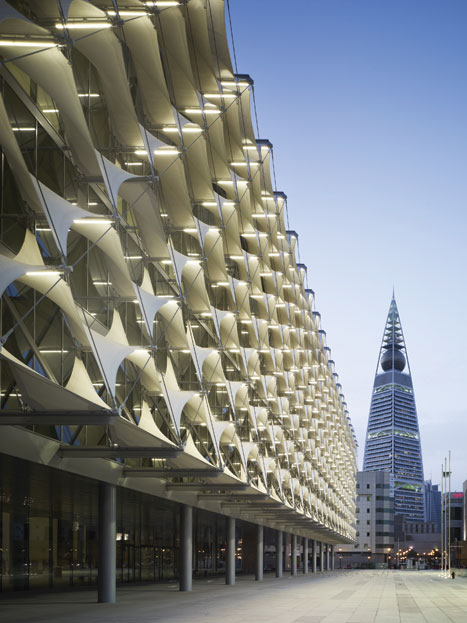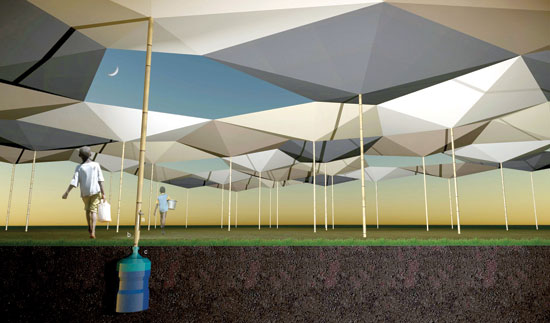The Future of Shade
How the World of Shade Structures Is Changing
As these and other entries into the Future of Shade competition demonstrate, shade is not just an afterthought, but is increasingly informing architecture.
“Fabric lets architects push the envelope on shade design because it takes a bunch of things out of the equation,” Kushner explains. “It's cost-effective. It's highly durable. It comes in a million colors. So, those are all things that we worry about. Now that that's out of the way, we can concentrate on the good, fun stuff, which is how we can start to manipulate it and shape it to do things that we couldn't normally do with solid and rigid architecture.”
Bernstein agrees: “Architecture provides shade, but it generally provides shade using hard or rigid materials. Using soft materials, you can provide shade in ways that are flexible so that everyone can have the amount of shade they want. Shade can be personalized or customized.”
The Design Benefits of Using a Pliable Material like Fabric
For architects, and particularly the younger breed of designers born into a world changing at perhaps the fastest pace ever, switching from a strict reliance on traditional building materials to a fabric-infused language should be smooth.
“We usually use hard stuff, like stone and wood,” Kushner says. “So, with fabric, you can crinkle it; you can fold it; you can crease it. You can do fun things with it that you can't do with the other stuff we usually use.”
“There's something so incredibly beautiful and intriguing and compelling about translucent materials,” Bernstein adds.
Design and Function with Shade Structures
In 2013, the inaugural Future of Shade competition brought in dozens of innovative ideas from architects inspired by the shading fabric itself.
Bernstein explains the appeal: “Fabric is light, so you can certainly do things with fabric that you can't do with other materials.”
As these design competitions affirm, shade and shading fabrics excite and inspire architects' imaginations all over the world.
In order to appreciate the future of shade and position oneself on the leading edge of this movement, it helps to review the past, the long history of using fabrics as architectural add-ons, and how the practice has evolved in the past century.

Photo © Gerber Architekten: Christian Richters
In Riyadh, Saudi Arabia, a glass-enclosed expansion to the King Fahd National Library was complemented by a woven glass-fiber membrane made of 1,000 twisted square awnings that block 93 percent of the incoming sunlight.










